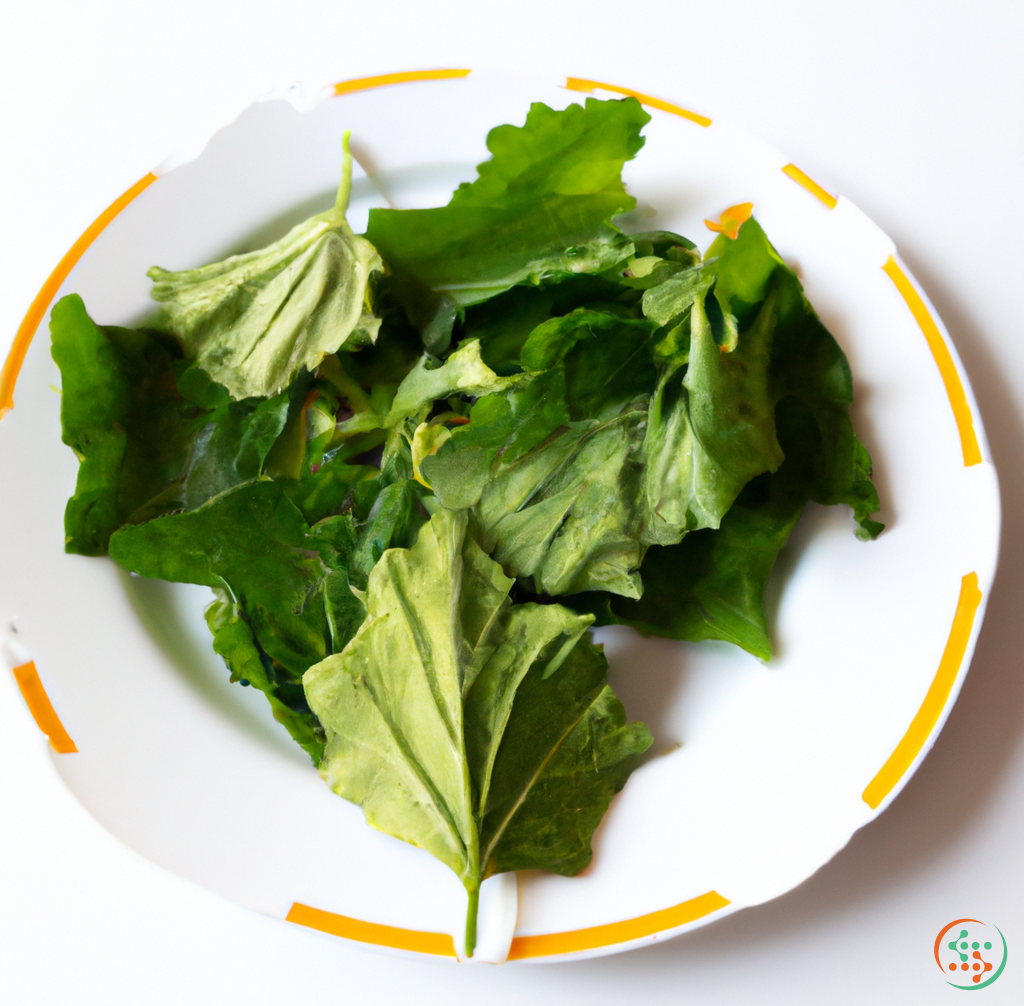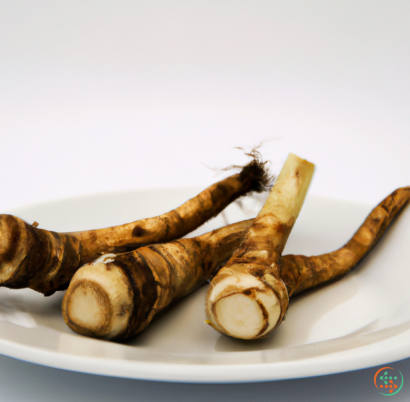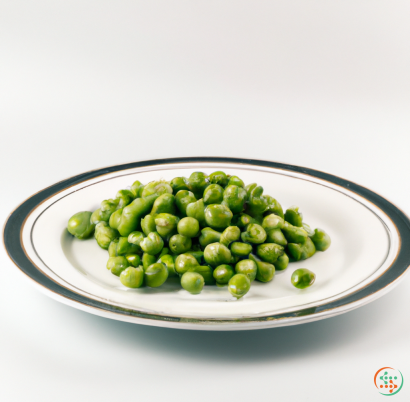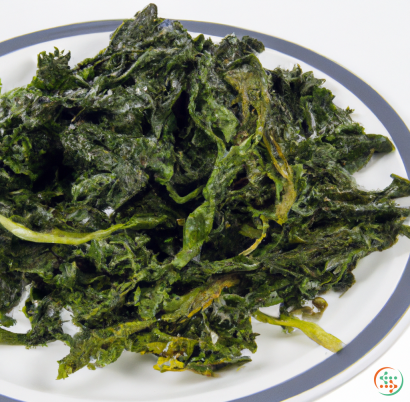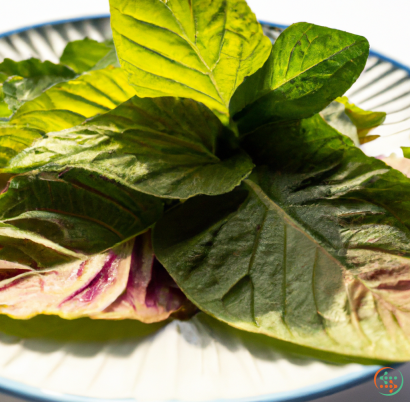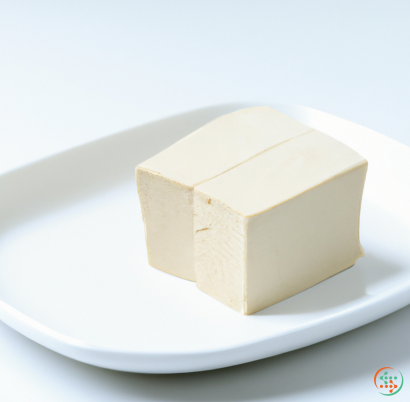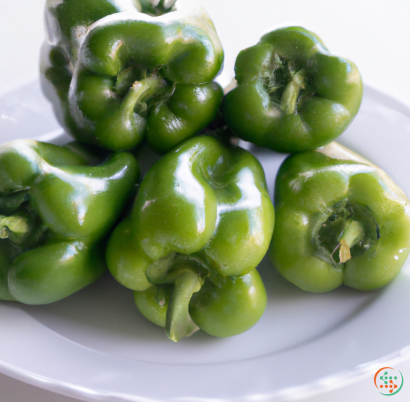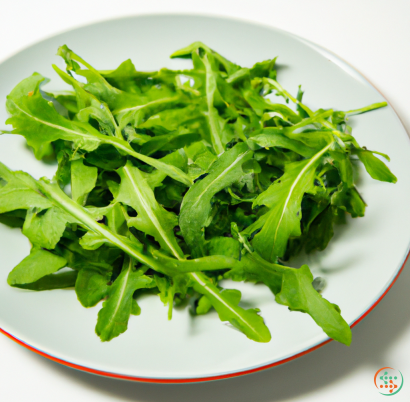Pumpkin Leaves
A pumpkin leaf is a type of leafy vegetable that has gained increased popularity in recent years for its sweet and earthy flavor. While often associated with the autumn season, pumpkin leaves can be found year-round in specialty stores, farmers' markets, and some produce sections at major grocery stores. Ideal for eating fresh in salads or cooked with other foods, pumpkin leaves offer ample nutritional benefits and can help you reach your daily quota of essential vitamins, minerals, and other micronutrients if you're looking to up your vegetable intake.
Native to subtropical and tropical areas of northern India and Sri Lanka, pumpkin leaves are related to the squash plant and they look quite similar, with vividly-colored and deeply-lobed leaves. Depending on the variety, the shape, size, and color of pumpkin leaves vary significantly, though they are often quite large and feature jagged edges. If you're curious about pumpkin leaves, you can pick up a packet of dried seeds to grow these dark green leafy vegetables year-round in most gardens.
Nutritionally, pumpkin leaves offer many essential micronutrients and are also low in calories. One cup of cooked pumpkin leaves only has around 25 calories and is a good source of dietary fiber, riboflavin, folate, vitamin A, and vitamin K. The leaves are also rich in antioxidants, including carotenoids like lutein, zeaxanthin, and beta-carotene, which can help support healthy vision, skin, and immune system health.
In terms of taste, the leaves of the pumpkin plant have a sweet, almost nutty flavor that's similar to spinach. With its mild essence, pumpkin leaves make great additions to salads, soups, sandwiches, vegetable stews, or served as a side dish with protein. The leaves can even be steamed, sautéed, boiled, or used as wraps for various fillings. Additionally, pumpkin leaves taste great when added to smoothies or juiced for unique nutritional benefits.
When it comes to preparing pumpkin leaves, it’s important to keep them clean to reduce the risk of food-borne illness. Start by washing the leaves with cold running water and gently scrubbing the surface to remove any dirt or debris. Once clean, cut away any discoloration or wilted parts with a sharp knife, before chopping the greens into your desired size.
When selecting pumpkin leaves, choose leaves that are bright green and unblemished, with a smooth texture and a mild smell. Avoid anything that's slimy or has yellowed or brown spots, as this is a sign of decay. Similarly, avoid any pre-packaged pumpkin leaves that appear to be dried out or shriveled up, as they may not have the flavor or texture you're looking for.
Overall, pumpkin leaves are a delicious and nutritious addition to any meal. With their sweet and earthy flavor, the leaves of this leafy vegetable can make a great complement to almost any dish. Whether enjoyed raw in salads, cooked with other vegetables, or juiced for a refreshing beverage, the nutritional benefits and versatility of pumpkin leaves make them an excellent choice for boosting your vegetable intake.
One of the most iconic symbols of the fall season is the pumpkin. Pumpkins are a cultivar of the winter squash, a generic term for any squash that matures in the fall and can be stored for winter use. They come in a variety of shapes, sizes, and colors, from bright orange to pale white. Pumpkin leaves, in particular, have become a popular staple of fall decor, as well as a delicious addition to recipes ranging from pie to chutney. But have you ever given thought to the journey of a pumpkin leaf from the vine to the dinner plate?
It all starts with the growth of the pumpkin plant. Though the crop’s origin is disputed and greatly debated, it is believed that pumpkins first originated somewhere in Central America between 5500 and 7500 B.C., and were introduced to North America by early settlers. The plants, which reach a height of 1.5 to 3 meters, belong to the same family as cucumbers and other cucurbitaceae. The seeds of pumpkins, usually sown in fertile, well-drained soils, are typically either purchased from commercial vendors or saved from previous harvests. Depending on the cultivar and location, pumpkins typically germinate between four and 11 days and reach maturity within 90–120 days.
A pumpkin leaf is responsible for many of the functions of the plant. Like all crops, the pumpkin leaf is a master of photosynthesis, where it converts carbon dioxide and water into nutrients and oxygen. The leaf also plays a crucial role in regulating temperature and attracting pollinators to the plant. Its thick, leathery texture allows it to retain water and protect the plant in the heat of the sun. The ribbed patterns found in the veins of the leaf increase the surface area of the leaf, allowing it to absorb more sunlight and facilitate the photosynthesis process.
The pumpkin leaf’s cycle begins as soon as the pumpkin seed germinates. The first leaves to sprout on the plant are called cotyledons, followed soon after by true leaves. During times of drought and intense sunlight, the surface of the leaf will curl, which helps protect the plant from extreme temperatures and conserve what little moisture may be available. As the plant continues to grow, new leaves will bud off, forming a unique whorled pattern across the surface of the vine.
The pumpkin leaf may eventually begin to yellow, a sign of maturity. Once the leaves begin to yellow, so too does the fruit, a sign that it is ready for harvest. At this stage, growers will uproot the pumpkin and transfer it to a curing station for uninterrupted drying and ripening.
Once the pumpkin has been harvested and cured, the leaves, which no longer carry out any significant role in the plant, are then separated from the fruit and discarded. For those who wish to take their pumpkin decorations a step further, these discarded leaves can be transformed into festive fall decorations. Some of the most popular methods include cutting them into shapes, painting them with different colors, or simply leaving them as they are.
For those wishing to incorporate pumpkin leaves into their culinary repertoire, it’s important to keep in mind that some varieties of pumpkin leaf are not suitable for eating. Those varieties such as the large lobed leaves of a jack-o-lantern pumpkin are not always edible due to the thick leathery texture, strong flavors, and the presence of toxic compounds. However, the small circular leaves of varieties like the baby bear pumpkin are often used to make a flavorful, nutritious soup.
To prepare the pumpkin leaves, first remove any excess stems, rinse, and then slice into thin strips. These thin strips are then sautéed in some type of oil and a few spices until they are tender and golden-brown. The cooked leaves can then be used as a topping for pizzas and pastas, as a side for roasted vegetables, or as part of a stir-fry.
From the vine to the dinner plate, the pumpkin leaf’s journey is simple and yet still captivating. This bright and festive symbol of the fall season is a reminder of nature’s ability to offer us both beauty and sustenance. With minimal effort, the pumpkin leaf can not only be a festive decoration, but also a flavorful addition to our recipes.
| Vitamin A | 0.097 mg | |
| Vitamin C | 0.011 grams | |
| Vitamin B1 | 0.09 mg | |
| Vitamin B2 | 0.13 mg | |
| Vitamin B3 | 0.92 mg | |
| Vitamin B5 | 0.04 mg | |
| Vitamin B6 | 0.21 mg | |
| Vitamin B9 | 0.036 mg |
| Calcium | 0.039 grams |
Daily Value 1.3 g
|
| Iron | 0.00222 grams |
Daily Value 0.018 g
|
| Magnesium | 0.038 grams |
Daily Value 0.4 g
|
| Phosphorus | 0.104 grams |
Daily Value 1.25 g
|
| Potassium | 0.436 grams |
Daily Value 4.7 g
|
| Sodium | 0.011 grams |
Daily Value 2.3 g
|
| Zinc | 0.2 mg |
Daily Value 0.011 g
|
| Copper | 0.13 mg |
Daily Value 0.9 mg
|
| Manganese | 0.36 mg |
Daily Value 0.0023 g
|
| Selenium | 0.9 ug |
Daily Value 0.055 mg
|
| Tryptophan | 0.041 grams | |
| Threonine | 0.156 grams | |
| Isoleucine | 0.156 grams | |
| Leucine | 0.318 grams | |
| Lysine | 0.2 grams | |
| Methionine | 0.054 grams | |
| Cystine | 0.032 grams | |
| Phenylalanine | 0.171 grams | |
| Tyrosine | 0.156 grams | |
| Valine | 0.181 grams | |
| Arginine | 0.217 grams | |
| Histidine | 0.05 grams |
| Total Sugars | 0.131141 grams |
per 100g
|
| Myristic acid (14:0) | 0.03 grams |
|
| Palmitic acid (16:0) | 0.15 grams |
|
| Stearic acid (18:0) | 0.01 grams |
|
| Total Saturated fatty acids: | 0.19 g | |
| Oleic acid (18:1) | 0.03 grams |
|
| Palmitoleic acid (16:1) | 0.03 grams |
|
| Total Monounsaturated fatty acids: | 0.06 g | |
| Linolenic acid (18:3) | 0.01 grams |
|
| Linoleic acid (18:2) | 0.01 grams |
|
| Total Polyunsaturated fatty acids: | 0.02 g | |
